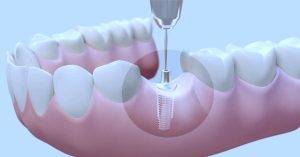
Jaw Correction Surgery
Jaw correction surgery, also known as orthognathic surgery, is a surgical procedure that is performed to correct a misaligned jaw or facial asymmetry. Jaw correction surgery can help improve the function and appearance of the jaw and face, and can also help address issues such as difficulty chewing or speaking.
The procedure involves making incisions either inside the mouth or on the skin of the face, and then repositioning the underlying bones of the jaw to correct the misalignment. The surgery may also involve using plates, screws, or wires to hold the bones in the corrected position while they heal. In some cases, the surgeon may also need to make additional incisions to access the bone.
Jaw correction surgery is typically performed under general anesthesia and can take several hours to complete. Recovery time can vary depending on the extent of the surgery, but patients may experience swelling, bruising, and discomfort for several days to several weeks following the procedure.
So It’s important to choose a qualified and experienced oral and maxillofacial surgeon to perform the procedure, and to discuss potential risks and benefits before proceeding with jaw correction surgery.
So It’s important to choose a qualified and experienced oral and maxillofacial surgeon to perform the procedure, and to discuss potential risks and benefits before proceeding with jaw correction surgery and at kreative dentistry you will get experienced oral and maxillofacial surgeon.
Maxillary Osteotomy: This surgery is performed on the upper jaw to correct a protruding or receding jaw. The surgeon makes an incision in the gums above the teeth to access the jawbone, then repositions the bone to achieve the desired alignment. The bone is secured in place with small screws and plates.
Mandibular Osteotomy: This surgery is performed on the lower jaw to correct a protruding or receding jaw. The surgeon makes an incision inside the mouth and along the jawline to access the jawbone, then repositions the bone to achieve the desired alignment. The bone is secured in place with small screws and plates.
Genioplasty: This surgery is performed on the chin to correct a small or recessed chin. The surgeon makes an incision inside the mouth and repositions the chin bone to achieve the desired projection. The bone is secured in place with small screws and plates.
Bimaxillary Osteotomy: This surgery is performed on both the upper and lower jaws to correct significant jaw alignment issues. The surgeon makes incisions in the gums and along the jawline to access both jawbones, then repositions them to achieve the desired alignment. The bones are secured in place with small screws and plates.
Jaw correction surgery can improve the function and appearance of the jaw, teeth, and face, and can also help to alleviate issues such as difficulty chewing or speaking, breathing problems, and sleep apnea. The specific type of surgery used will depend on the individual needs and goals of the patient, as well as the expertise and experience of the surgeon. It is important to discuss the options and potential risks and benefits of each type of surgery with your surgeon to determine which approach is best for you.
To know more about Kreative Oral Surgery
For your child’s dental health, contact the experts at kreative oral surgery, Child Dental Oral Surgery in Gurgaon, Jaw correction surgery near me
Contact Us









